Over two days in April (19-20), BEAR users came together to meet and hear about the fascinating research that Postgraduate Researchers (PGRs) and academic staff are undertaking on the University’s supercomputer, BlueBEAR. The BEAR PGR Conference is an annual event where we give PGRs an opportunity to get experience in running a conference, gaining skills that will enrich their CV – see Yordanka’s blog post, who was on last year’s Committee. It also provides a good opportunity for PGRs to practice presenting their research to a diverse audience, something that should help them in future public outreach.
Day 1
It was an early start to the first day in the program where we welcomed our keynote speaker, Professor Stephen Jarvis. Professor Jarvis is currently Provost of the university but he has been very active in the supercomputing field and last year was part of a team of researchers in Computer Science, together with Rolls Royce, who won the SC22 Visualisation and Data Analytics Showcase at the International Conference for High Performance Computing (HPC). He showed us the winning video (see below), which illustrates how they used the national supercomputer ARCHER2 to simulate the compressor in a jet engine. He also described his appreciation of HPC and how it advances research.
It was then onto the PGRs themselves to describe their research and first up were those covering it in just 3 minutes! There was a wide variation in the research being done with talks from Applied Mathematics through to improving the statistical methods used in Clinical Trials. After a demo on how to use the BEAR portal, we then had a longer talk from Xinyi Wu who further described her mathematical research, using Julia on BlueBEAR to numerically compute particle dynamics. Carol Sandys, Head of Advanced Research Computing (our team which manages BEAR services), then described the various ways that researchers are represented and can feed back on what they need from BEAR. I also covered BEAR Champions, how they can help researchers in their area with using BlueBEAR and other BEAR services and how to become one themselves!
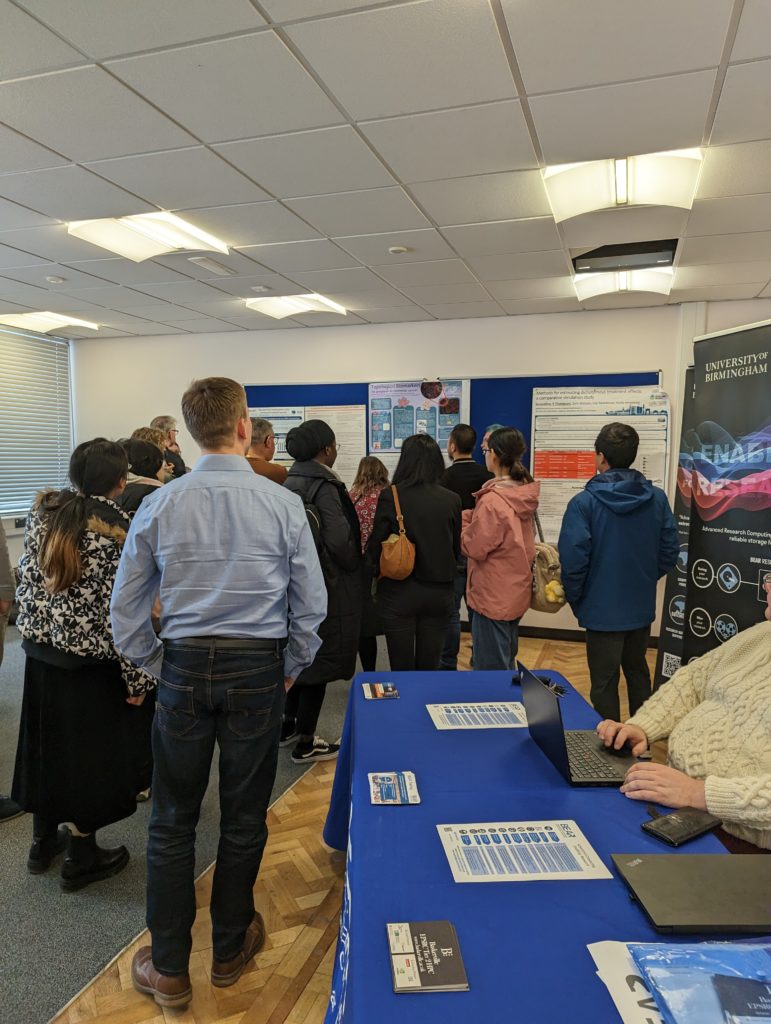
It was great to make a return to an in-person event this year and the buzz around the poster session and lunches definitely reinforced the benefit of having this as an in-person event, although we were pleased to have some remote speakers join us online who could not make it otherwise. There were so many excellent posters, the judges had a tough time deciding on the winner. Again there was a wide variation in research from genomics in moss, through to predicting typhoons in China.
After lunch, the first day concluded with two extended talks from Ben Jenkins and Sebastian Gilbert. Ben is a PhD student from Chemical Engineering using Discrete Element Method (DEM) to run thousands of simulations of forming a powder heap on BlueBEAR to build a dataset.
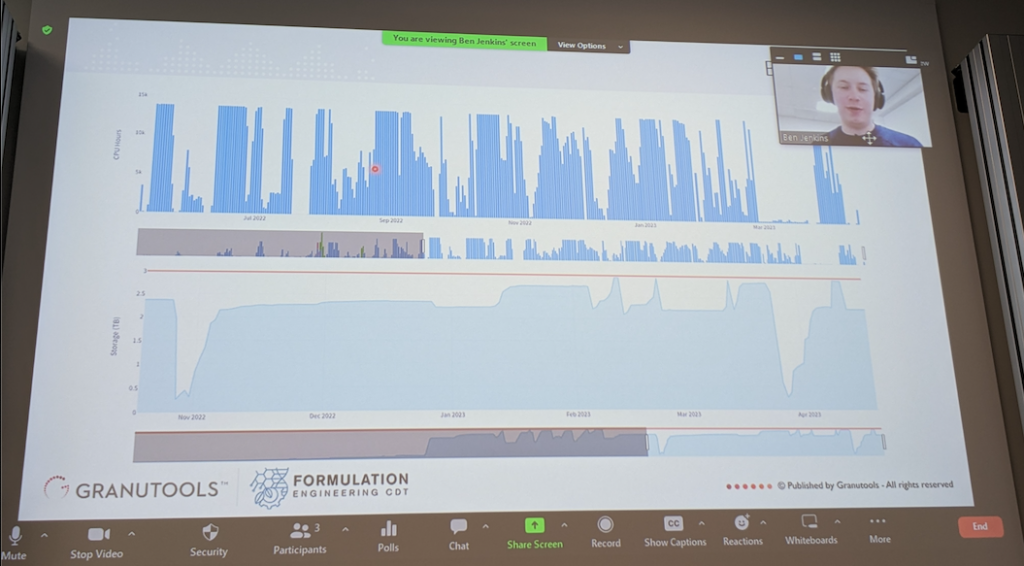
Ben showed us just how much he uses BlueBEAR (see top graph in image, peak is 24K CPU hours) and the BEAR Research Data Store (bottom graph, peak is 3TB) to keep the data safe. By having access to a large amount of data storage, he saves compute power by not having to regenerate data again.
I couldn’t do my project without BlueBEAR
Ben Jenkins
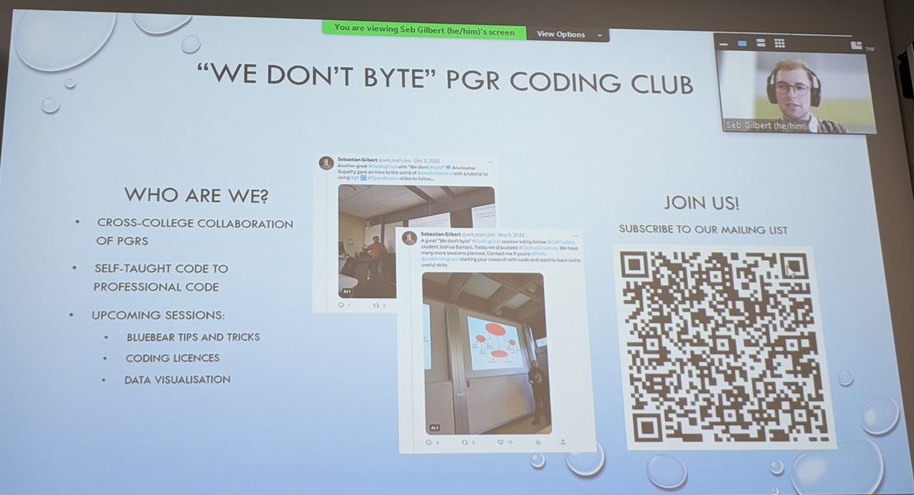
We then heard from Sebastian Gilbert, a PhD student from Physics & Astronomy who is collaborating with Astra Zeneca. Sebastian has a background in maths which he uses to analyse images to model systems in biology. For his PhD he is investigating colorectal cancer cells to understand the interaction of the cells and whether that affects cancer prognosis. He also highlighted the ‘We Don’t Byte’ Coding Club, for PGRs who would like to improve their coding techniques. They have some interesting talk topics coming up including ‘data visualisation’. Unfortunately ‘BlueBEAR Tips and Tricks’ has had to be postponed, find out how to join here.
Day 2
We kicked off Day 2 of the conference with some more PGR talks, this time from Jacqueline Thompson and Zihan Chen. Jacqueline is a PhD student in Applied Health Research and she described her research evaluating statistical methods used in clinical trials. Zihan (PhD student in Social Policy, Sociology and Criminology) then described the very different topic of urban migrants in China and how they integrate with society.
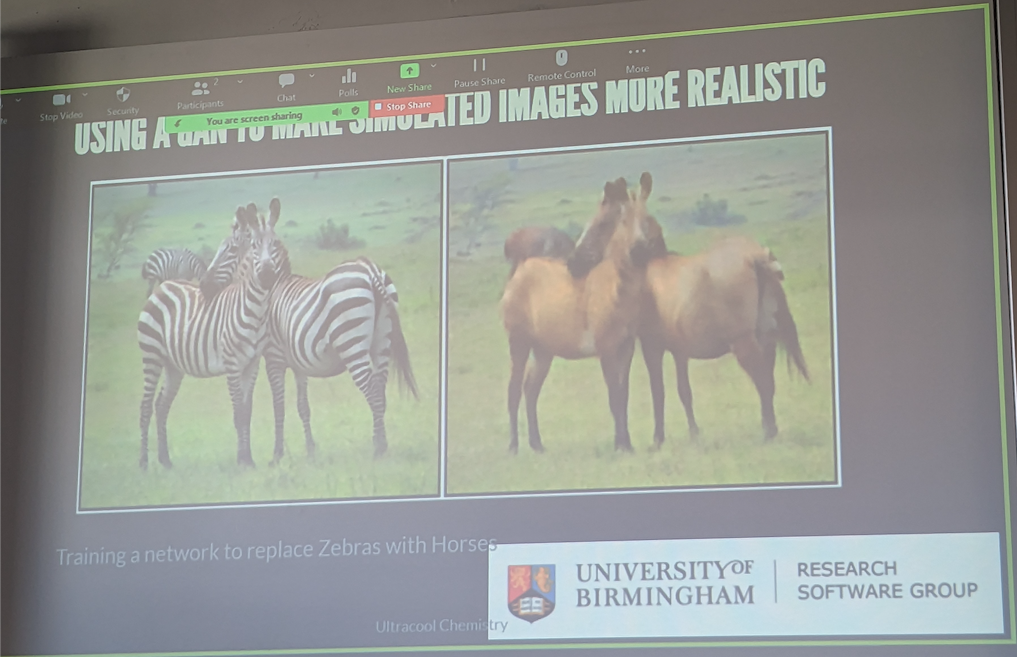
After a break, we returned to hear the last of the PGR speakers plus a talk from Dr James Allsopp, Research Software Engineer, about how he is assisting Professor Tim Softley with his research towards a greater understanding of chemical bonding in Coulomb Crystals. James discussed how they are using deep learning techniques to simulate data, including how to train a network to replace zebras with horses!
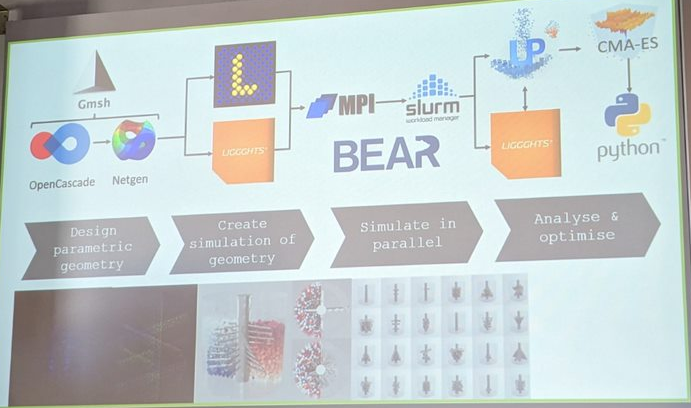
Leonard Nicusan, PhD student in Chemical Engineering then described how he uses BlueBEAR for his many simulations to establish the best design for a blade for industrially mixing products, such as chocolate. He described the process they go through to find designs that would not be predicted by humans, using some great illustrative videos and props. Lastly, we heard from Jack Sykes (PhD student in Physics & Astronomy), also working in the inter-disciplinary area of topology and another heavy user of BlueBEAR (peak use of 6.5K cores).
I couldn’t do more than 5% of my research without BlueBEAR
Leonard Nicusan
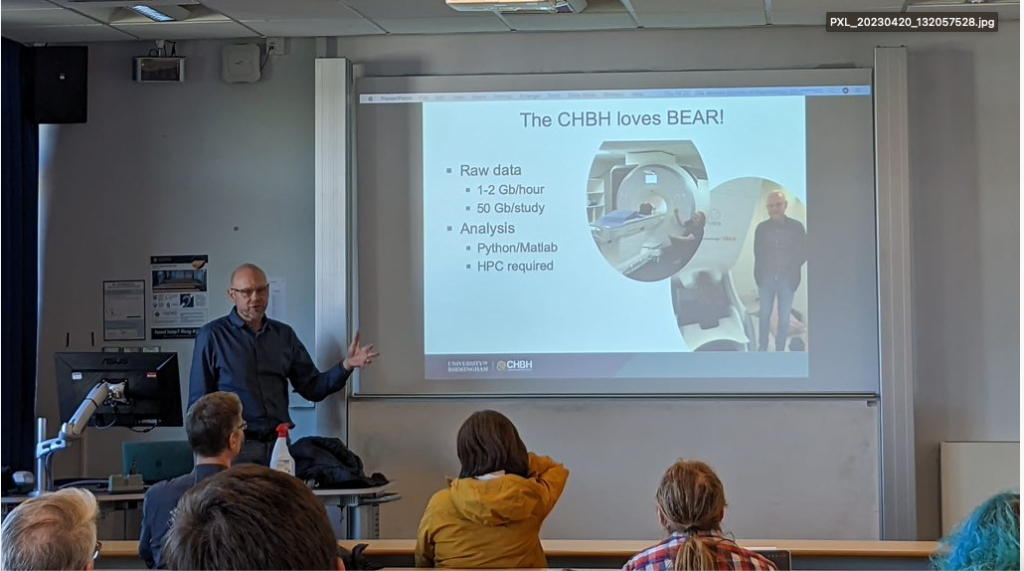
Professor Ole Jensen (Co-Director of the Centre for Brain Health) gave the final keynote talk and a fascinating insight into investigations of the human brain using MEG scans (magnetoencephalography). His talk sparked a very interesting discussion around bilingualism and at what point children learn how to ‘preview’ words, as languages vary in whether they are read from right to left, left to right or up and down.
And the winner is…
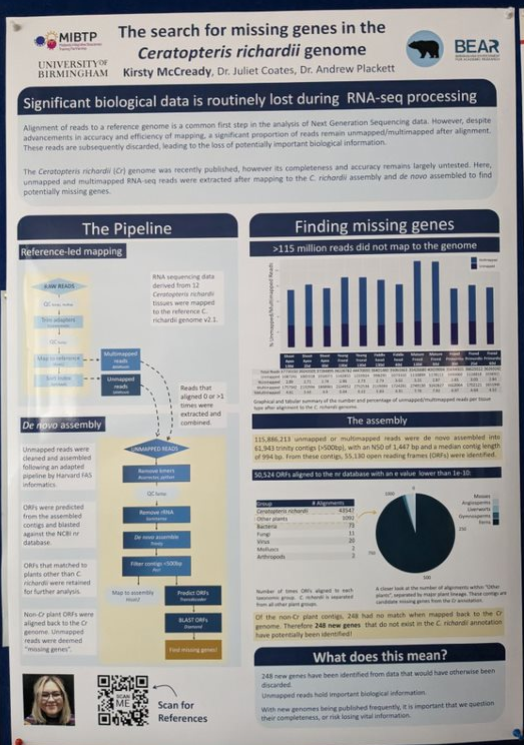
Chair of the BEAR User Group, Dr Dietmar Heinke, concluded the day by announcing the best poster and talk winners. It was a difficult choice with such an excellent range of presentations but the winner of the best poster was Kirsty McCready, with her engaging and clear presentation of ‘The search for missing genes in the Ceratopteris richardii genome’ (left) and the winner of the best talk was Leonard Nicusan, with his highly visual and impactful talk (below).

Thanks to…
We would like to thank Lenovo for providing the excellent prizes (tablets) for the winners. Thank you to all the people who gave talks and poster presentations and most of all, thank you to the PGR Committee who organised the conference, particularly the Chair, Anthony Lee.
We will be looking for members for next year’s PGR committee in the autumn. If you are interested, then please get in touch with Dietmar (email: d.g.heinke@bham.ac.uk ).
